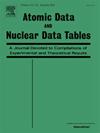利用回报预测方法改进风险价值评估
IF 2.7
3区 物理与天体物理
Q2 PHYSICS, ATOMIC, MOLECULAR & CHEMICAL
引用次数: 0
摘要
风险价值是一种统计数据,用于预测在特定时间范围内,在一定程度上(通常为95%或99%)可能发生的最大损失。对于风险管理和监管机构,它提供了一个值得信赖的量化风险管理工具的解决方案。VaR已成为最广泛使用和接受的下行风险指标。今天,商业银行和金融机构利用它作为一种工具来估计投资组合中即将发生损失的规模和可能性,从而估计和管理风险暴露的程度。目标是获得尽可能接近目标比率的VaR“失败”或“破坏”(超过VaR的损失)的平均数量。也希望损耗尽可能均匀地分布。VaR可以用多种方式建模。最简单的方法是根据波动率不变的假设,根据先前的收益来估计波动率。否则,波动性过程可以使用GARCH模型进行建模。近年来,机器学习技术已被用于基于历史时间序列进行股票市场预测。机器学习系统通常在样本内数据集上进行训练,在样本内数据集上,机器学习系统可以根据底层指标调整和改进特定的超参数。训练后的模型在样本外数据集上进行测试。我们根据不同的指标(i)将一天(d)的VaR估计的基线与它们各自的变量(包括d的股票收益预测信息和d之前几天的股票收益数据)和(ii)与GARCH模型(包括d的收益预测信息和d之前几天的股票收益数据)进行了比较。各种策略,如ARIMA和提出的回归集合已被用于预测股票收益。我们观察到,单变量技术和GARCH与回报预测相结合的版本在四个不同的市场中表现优于基线。本文章由计算机程序翻译,如有差异,请以英文原文为准。
Leveraging Return Prediction Approaches for Improved Value-at-Risk Estimation
Value at risk is a statistic used to anticipate the largest possible losses over a specific time frame and within some level of confidence, usually 95% or 99%. For risk management and regulators, it offers a solution for trustworthy quantitative risk management tools. VaR has become the most widely used and accepted indicator of downside risk. Today, commercial banks and financial institutions utilize it as a tool to estimate the size and probability of upcoming losses in portfolios and, as a result, to estimate and manage the degree of risk exposure. The goal is to obtain the average number of VaR “failures” or “breaches” (losses that are more than the VaR) as near to the target rate as possible. It is also desired that the losses be evenly distributed as possible. VaR can be modeled in a variety of ways. The simplest method is to estimate volatility based on prior returns according to the assumption that volatility is constant. Otherwise, the volatility process can be modeled using the GARCH model. Machine learning techniques have been used in recent years to carry out stock market forecasts based on historical time series. A machine learning system is often trained on an in-sample dataset, where it can adjust and improve specific hyperparameters in accordance with the underlying metric. The trained model is tested on an out-of-sample dataset. We compared the baselines for the VaR estimation of a day (d) according to different metrics (i) to their respective variants that included stock return forecast information of d and stock return data of the days before d and (ii) to a GARCH model that included return prediction information of d and stock return data of the days before d. Various strategies such as ARIMA and a proposed ensemble of regressors have been employed to predict stock returns. We observed that the versions of the univariate techniques and GARCH integrated with return predictions outperformed the baselines in four different marketplaces.
求助全文
通过发布文献求助,成功后即可免费获取论文全文。
去求助
来源期刊

Atomic Data and Nuclear Data Tables
物理-物理:核物理
CiteScore
4.50
自引率
11.10%
发文量
27
审稿时长
47 days
期刊介绍:
Atomic Data and Nuclear Data Tables presents compilations of experimental and theoretical information in atomic physics, nuclear physics, and closely related fields. The journal is devoted to the publication of tables and graphs of general usefulness to researchers in both basic and applied areas. Extensive ... click here for full Aims & Scope
Atomic Data and Nuclear Data Tables presents compilations of experimental and theoretical information in atomic physics, nuclear physics, and closely related fields. The journal is devoted to the publication of tables and graphs of general usefulness to researchers in both basic and applied areas. Extensive and comprehensive compilations of experimental and theoretical results are featured.
 求助内容:
求助内容: 应助结果提醒方式:
应助结果提醒方式:


